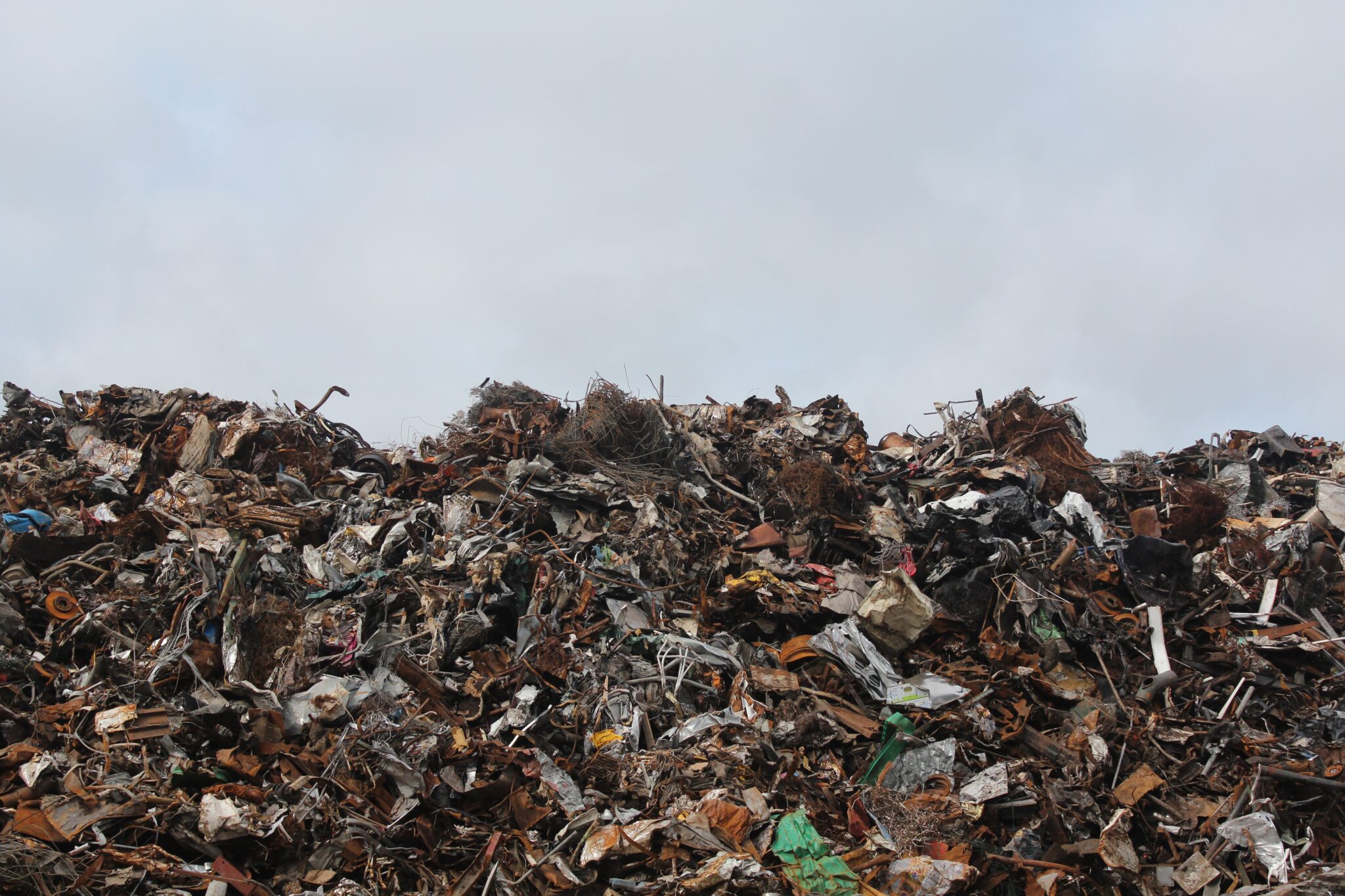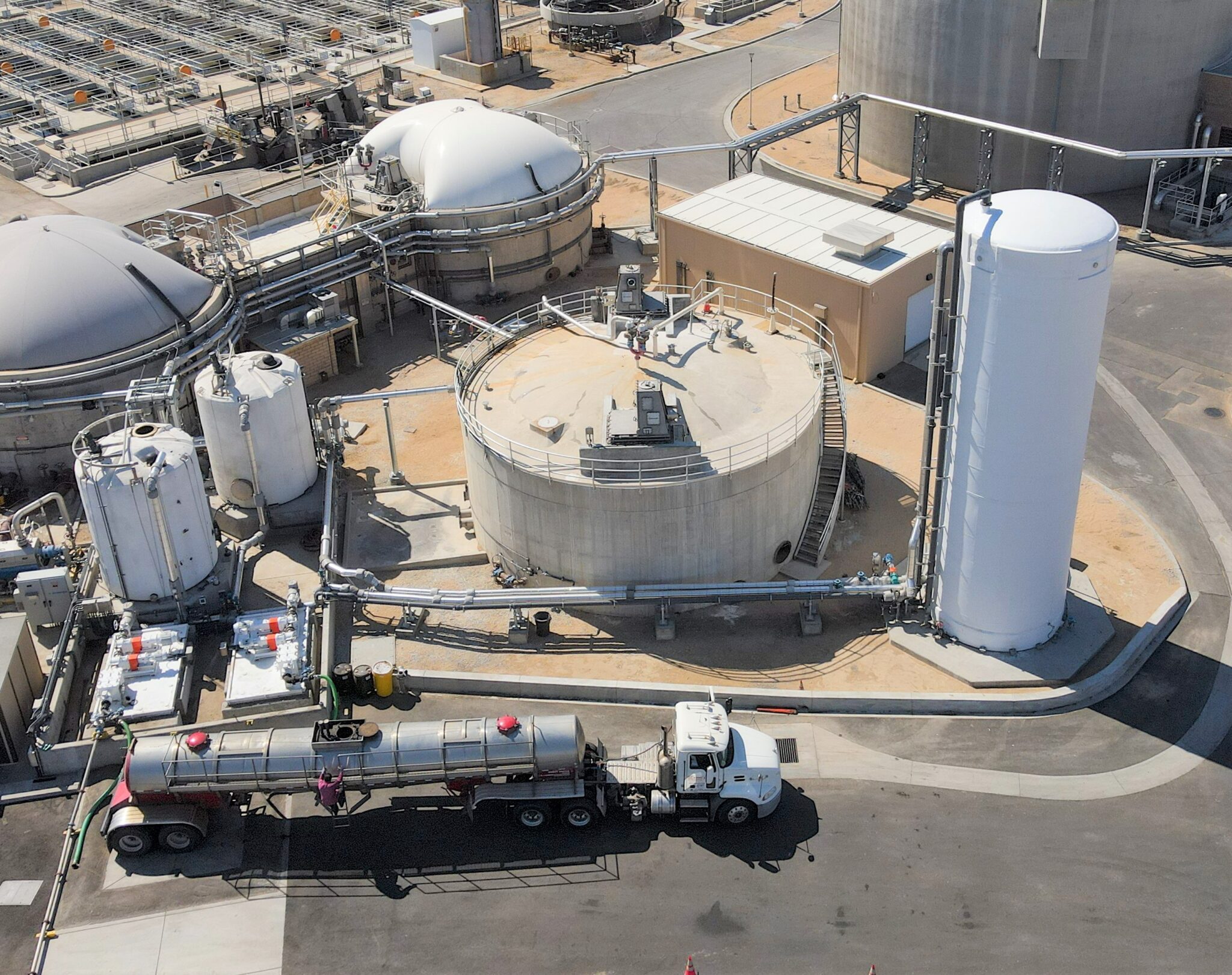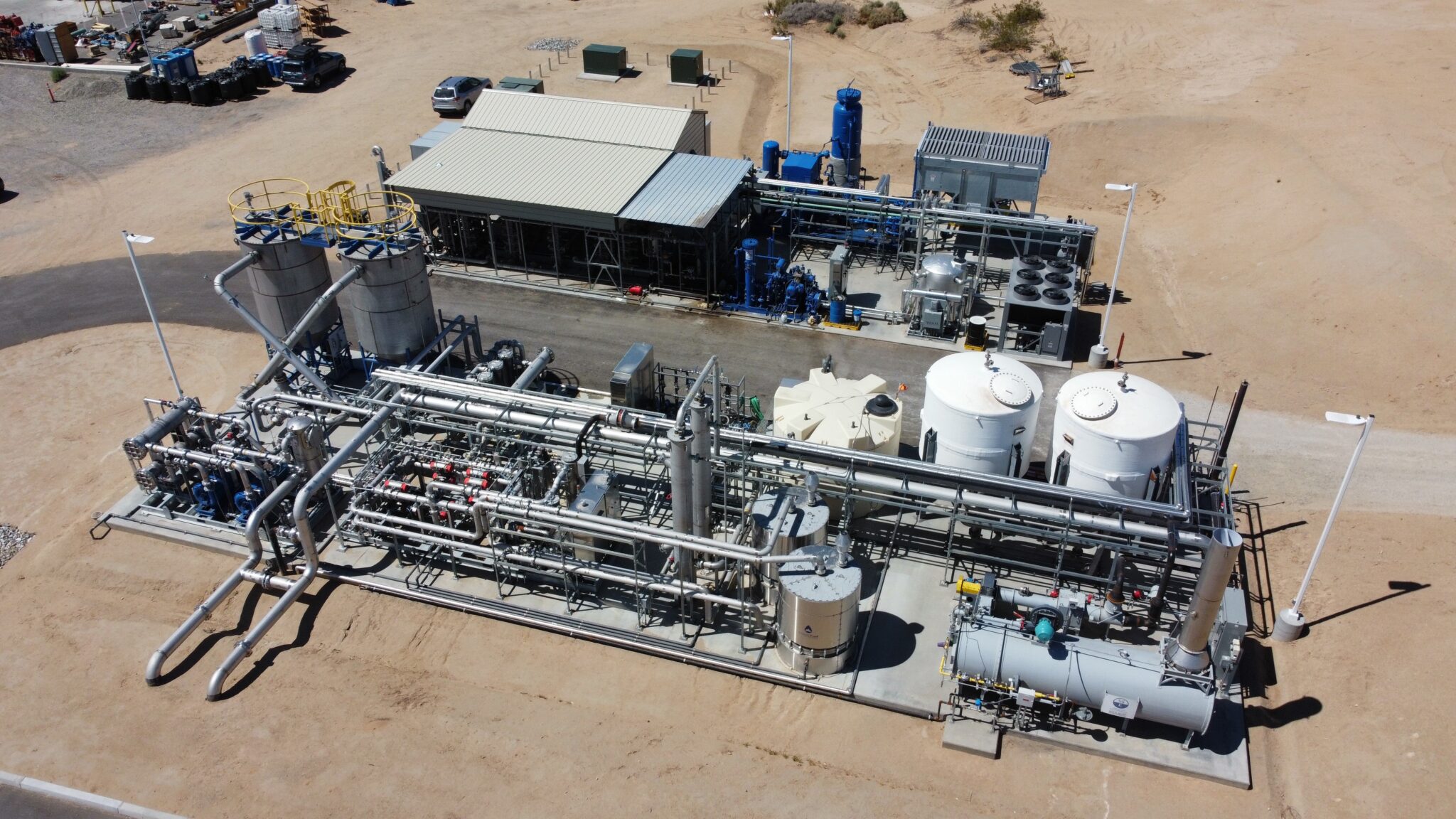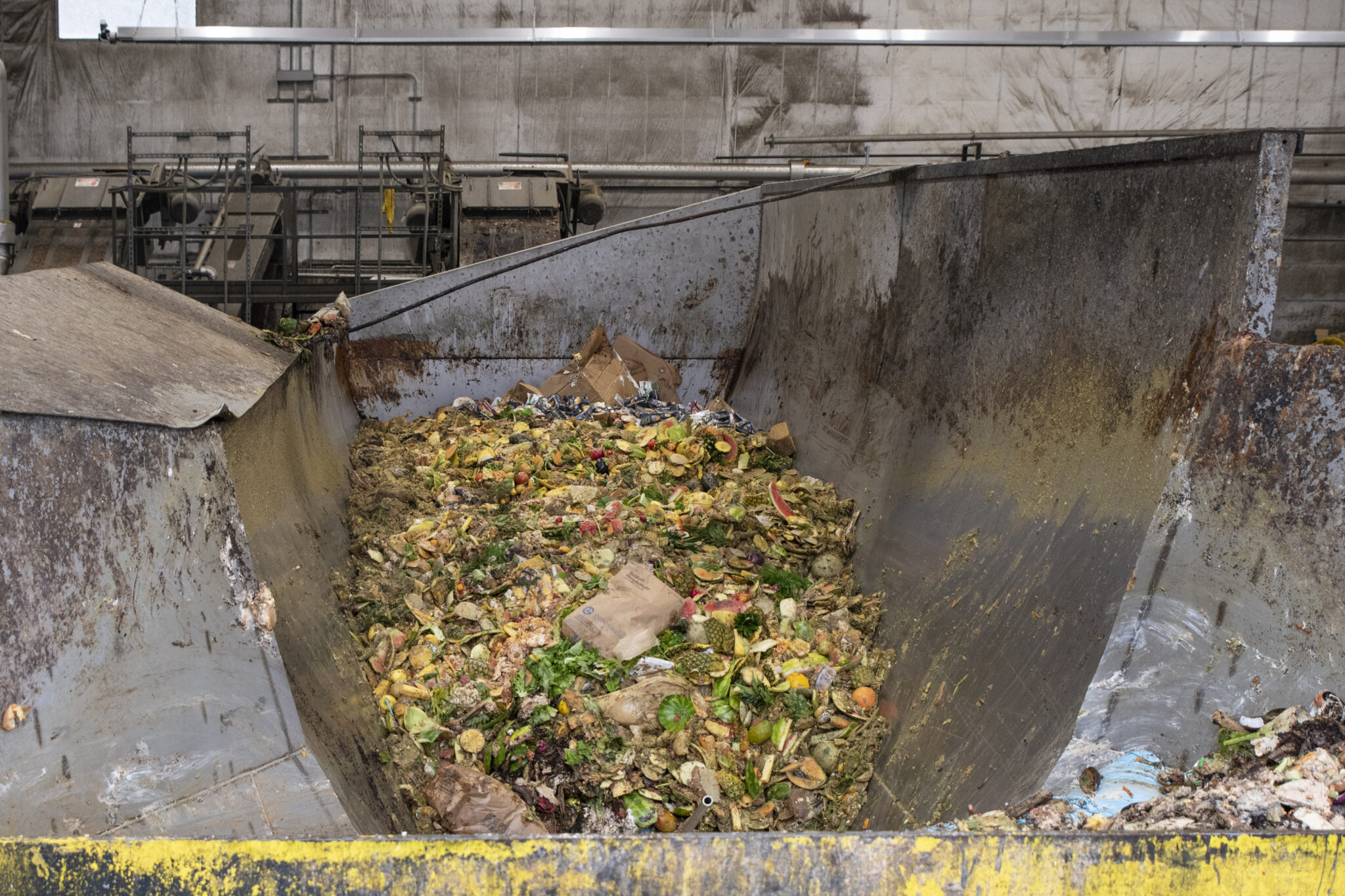The 40 Million Ton Gold Mine
- Juni 28, 2023
- Melissa Bailey

Efforts to divert food waste from landfills are expanding across the U.S. But once this waste has been collected, how can haulers and municipalities make the most of it?
We Americans send close to 40 million tons of food waste to landfills every year, according to the U.S. EPA. It’s close to 29% of everything we landfill.
Once landfilled, this rotting food creates a climate super-pollutant, methane—around 110 million metric tons of it in the U.S. alone. Globally, so many tons of methane are created from food waste that if food waste were represented as a country, it would be the third largest greenhouse gas emitter in the world, just after China and the U.S.
With more and more states and municipalities aiming for net-zero emissions, and landfill space getting harder to find, mandates and incentives to divert food waste from the dump are increasing. So far, nine states—with a total of 27% of the US population—have passed laws requiring food waste diversion.
Expired foods, restaurant waste, household source separated organics—much of which can’t be composted—it will all need to be processed. Waste haulers and municipalities that collect waste need solutions. Now.
But while food waste collection may initially seem like a burden, it’s actually generating revenue for municipalities around the country and creating a circular economy.
From Dump to Dough
Many waste haulers, cities and counties tasked with managing this new and different waste stream aren’t thinking past the most common solutions, says Darron Poulson, General Manager of the Victor Valley Wastewater Reclamation Authority (VVWRA) in Victorville, California. “I’ve spoken with a lot of these folks and most of them initially believe composting is the only solution—or think they would need to build an expensive anaerobic digestion facility using city funds,” he says. “They know composting costs more than dumping because of the additional tip fees and hauling distances. And obviously a purpose-built facility is a big investment.”
“But there’s a better solution,” Poulsen says.
In his role as GM of VVWRA’s 12 MGD (million gallon per day) wastewater facility, Poulson says he’s implementing a food waste processing solution that’s a win for municipal leadership, ratepayers, and even society as a whole.
Producers and haulers can send food waste diverted from landfills to his facility, which—thanks to upgrades paid for with a public-private partnership (P3)—can process up to 20,000 gallons of food scrap slurry per day.
That slurry is then co-digested with 140,000 gallons per day of wastewater sludge in VVWRA’s anaerobic digesters, producing valuable renewable energy that creates a revenue stream to the water reclamation operation. The P3 funded an advanced digestion system and other technologies that tripled capacity—without building new digesters. The partnership also paid for systems to upgrade biogas to pipeline-quality RNG, a gas utility interconnection, an organics receiving station, and other capital improvement needs.

Digestion Capacity Hiding in Plain Sight
The VVWRA facility can produce up to 320,000 MMBtu per year of renewable natural gas, which is injected into the natural gas distribution network. Because food waste RNG is carbon-negative—reducing overall GHG emissions by mitigating methane emissions from landfills—it’s a highly valuable fuel. Sales of the RNG generate revenue for VVWRA under a revenue sharing agreement between the P3 partners.
And while co-digesting food waste slurry with wastewater has mostly been done in larger wastewater reclamation facilities, VVWRA’s plant upgrades prove this solution works in small to mid-sized plants as well. There are thousands of such facilities around the country, ready to provide the base infrastructure to digest the billions of gallons of organic waste that will come online with new waste diversion laws.
“The resources to manage food waste are hiding in plain sight,” says Shayne Petkiewicz, a Business Development Manager for Anaergia, which served as a full-service partner to VVWRA on the waste-to-RNG project. Anaergia formed the public-private partnership and upgraded VVWRA’s anaerobic digestion systems using its advanced anaerobic digestion technology that enabled the facility to take on additional food waste. Anaergia also deployed its own Biogas Upgrading system (BUG™), which cleans and upgrades the biogas to RNG for pipeline injection.
“Any city or county that has a wastewater treatment facility can do what VVWRA has done,” says Petkiewicz. “Turning a wastewater reclamation facility into a renewable energy production plant requires no upfront cost for ratepayers or taxpayers and is one of the best ways to make the most of existing infrastructure.”

The Standalone Option
Another option for waste haulers, large waste generators and municipalities with their own collection operations is to offload their food waste to standalone anaerobic digestion facilities. Anaergia’s Rhode Island Bioenergy Facility (RIBF), located near Rhode Island’s central landfill in Johnston, is a good example of a dedicated food waste digester facility.
Anaergia recently acquired the facility, which is currently producing renewable electricity, and is upgrading the plant using its BUG biogas upgrading system to produce renewable natural gas. The facility will divert over 100,000 tons per year of food waste from landfills and convert the waste to renewable fuel. RIBF is expected to produce over 300,000 MMBtu of carbon-negative RNG starting later this year, which will make it New England’s largest anaerobic digestion-to-RNG facility. In addition, the plant will recycle the nutrient-rich solid residual left over after anaerobic digestion to enrich New England soils and reduce the use of fossil fuel-derived fertilizers.
The Rhode Island facility also illustrates that the market for RNG is broadening. In a what may be a new trend for the industry, the RNG produced from the Rhode Island plant has been contracted for purchase by a Canadian oil refiner, says Alex MacFarlane, Director of Project Development for Anaergia. “Corporations and other organizations with concrete carbon reduction commitments can purchase the fuel in long-term contracts to reduce their overall emissions immediately to displace fossil gas while offsetting landfill methane,” MacFarlane says.

A Green Circle
And ultimately, that is the beauty of renewable natural gas, experts say. Because RNG is made from organic waste which, if landfilled, would create planet-warming methane, it reduces these landfill GHG emissions and allows operations to decrease fossil fuel use. It has a negative carbon intensity score. The means that using RNG partially offsets emissions that are difficult or impossible to avoid.
In fact, RNG produced at the Rhode Island Bioenergy Facility is expected to prevent about 41,000 metric tons of CO2e (carbon dioxide equivalent) emissions a year, which is the equivalent of taking about 8,800 cars off the road. And the Victor Valley Wastewater Reclamation Authority facility’s RNG prevents about 38,000 metric tons of CO2e per year, the same as taking about 8,500 cars off the road.
“Projects like these effectively manage waste as a valuable resource, with the added benefit of doing good for the environment,” said VVWRA’s Poulson. “We’re creating a circular economy that has benefits all around.”
Melissa Bailey is Director of Marketing and Corporate Communications for Anaergia and has written about clean fuels for multiple organizations.
UNTERSTÜTZEN SIE UNS IM KAMPF GEGEN DEN KLIMAWANDEL
Sprechen Sie mit uns darüber, wie wir Ihrem Unternehmen oder Ihrer Gemeinde dabei helfen können, aus organischen Abfällen erneuerbare Energie zu machen.
